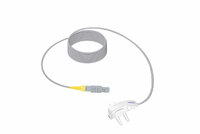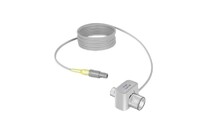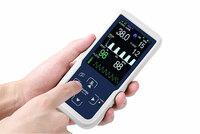Anesthesia Multi-Gas Detector
Specifications
Our Anesthetic Gas Detector Module can simultaneously measure the concentration waveform and data of CO2, N2O,anesthetic gas, as well as respiratory rate. The types of anesthetic gases measured
include halothane, enflurane, isoflurane, sevoflurane and desflurane. The user can manually select the type of anesthetic gas.
Anesthesia Multi-Gas Detector AneSure™-M
Mainstream Anesthesia Multi-Gas Module, simultaneously measure the concentration waveform and data of carbon dioxide, nitrous oxide and anesthetic gas, as well as respiratory rate.
Anesthesia Multi-gas Detector AneSure™-S
Side stream Anesthesia Multi-Gas sensor, can simultaneously measure the concentration waveform and data of CO2, N2O, anesthetic gas, as well as respiratory rate.
Features of Anesthesia Multi-gas Detector/Module
1.Compatible with a variety of protocols, so that the products can be quickly upgraded and assembled.
2. Plug and play, the host does not need internal circuit, just a serial port. Can measure data within 4 seconds after power on. Suitable for adults, children and newborns.
3. Can also be used in heavy humidity environment for a long time, reducing the cost of use.
4. Automatic pressure compensation. There is a built-in atmospheric pressure sensor, which is suitable for various altitude ranges.
5.High-precision. Careful selection of infrared devices, hardware design and software algorithm, to achieve high signal-to-noise ratio, to ensure the measurement accuracy for temperature range of -
5-50 °C and in the range of 0 - 20%.
How Do anesthetic gas module Work?
The Monitor is based on the principle that different gases absorb the infrared of a particular wavelength. For examples, CO2 sensitive wavelength is 4.26 um, N2O sensitive wavelength is 4.5 um, and
the sensitive infrared wavelengths of the five anesthetic gases distribute between 7.5-10.5 um. We can choose one wavelength as reference which is not sensitive to these gases. When the
concentration of the monitored gas changes, its absorbed dose of the sensitive infrared varies accordingly, but the reference infrared does not change. The monitor employs a four-channel sensor,
with every channel having an optical filter that only allows a narrow band wavelength to pass through, and the central wavelength passing through each optical filter is different. Take CO2 for
example, when one beam of infrared passing through sampling gas with CO2 molecule reaches infrared sensor, the CO2 channel measures the residual infrared signal, while the reference channel
measures initial infrared, then we use standard gas with known CO2 concentration to calibrate the specific ratio between the two channel signal, then store the calibrated parameter into the
internal storage and User Manual of Mainstream Multigas Monitor 23 of 50 then we can measure CO2concentration in the rated range. Likewise, the principles for measuring the N2O and selected
anesthetic gas concentrations are same.
Benefits of anaesthetic gas monitoring/Module
Mainstream and sidestream modes
Compatible with multiple protocols
Plug and Play
Flexible upgrade
Provide you with a one-stop solution for your clinical needs
Excellent performance and reasonable price
FAQs of Anesthesia Multi-gas Detector/Module
What is the components of waste anesthetic gas monitoring/Module?What is the components of Anesthesia Multi-gas Detector/Module?
Adapters for mainstream, and water filters for sidestream
How to clean and maintain anesthesia gas monitoring/Module?How to clean and maintain Anesthesia Multi-gas Detector/Module?
If you want to know more about end co2 monitoring and how often should waste anesthetic gas monitoring be performed, please visit our website.





